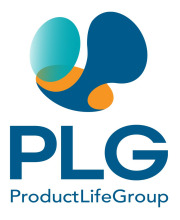Product Development Trends for a Changing Market: Breakfast Session Bulletin
.png)
Throughout CPHI North America 2023, several Breakfast Sessions were held to start the day off right with a complimentary breakfast and a networking and learning session for our attendees. With insightful presentations from industry experts and partners, the CPHI North America Breakfast Sessions had something for everyone looking to fill their brains and their stomachs.
Experts from ProductLife Group (PLG) gathered to discuss current product development trends. The speaker panel included James Mencel, PhD (Head of Drug Substance), Kyriakos Michailaros (Head of Drug Product Services), Coleman Byrne (Head of Analytical Services), and Asif Rahman (Business Development Director) of Design Space Inpharmatics (DSI), LLC, a ProductLife Group. Topics covered included optimisation of API process and supplier selection, analytical optimisation, and drug development considerations for product development scaling.
Expedited FDA pathways and their impact on CMC considerations
Process optimisation and expedited FDA progress and the impact of such decisions are of increasing concern to those operating within CMC, as well as what such expedited categories mean for the API sector. Different accelerated programs, though each with a different focus, will essentially allow manufacturers and developers to file for FDA approval early with agreed clinical endpoints, with some pathways allowing filing as early as phase II clinical trials. Mencel comments that while such flexibility may be beneficial to some in the drug development pipeline, those operating in CMC are offered no such flexibility. “Everything that’s required for control of quality is still required even if you’re on an expedited program,” he stated. “So we don’t get a break. We just get a shorter runway to get there.”
In order to meet the challenges posed to CMC, Mencel stated that drug quality and substance control should “dimensionalise” the problem in order to anticipate the challenges. Some questions he offered included
-
How routine or non-routine is the API (high potency? Unstable?)
-
What is the runway to filing?
-
What are the API supply requirements?
-
What is the suitability of existing API process?
Proper CMC planning for the selected process was also emphasised throughout the session. CDMO/CMO capabilities from drug development, manufacturing, and launch, information on regulatory starting materials, and registration of the API stability are some of the key critical considerations needed to not only meet but anticipate and stay ahead of the challenges posed by accelerated timelines.
ICH Q14 and analytical method development
Analytical method development for the establishment of product purity, potency, and safety according to ICH Q14 guidelines are also a trending topic within the drug product development sphere, according to Byrne. While the development of an analytical method may sound straightforward to begin with, there are many approaches to the development process that one must consider in order to choose that which best suits their needs.
The classic approach, Byrne stated, involves a “seat-of-the-pants approach”, choosing a process based on what needs to be tested and validating the approach as the need arises. While this approach is possible, it can lead to unpredictable circumstances such as surprise impurities or equipment regulations that are unaccounted for by the analytical method plan. The ICH Q14 guideline maintains an approach based around planning ahead with an enhanced method development approach. “What do you need to do ahead of time to end up with the best product at the end of the entire process?” Byrne asked. Several questions he proposed within the enhanced approach include what needs to be done, what is known, and what are we looking for, what is being done, does the method do what it needs to do, is it an acceptable way of working, and does the method still work for the current development needs.
“As with all science, the enhanced approach is based around common sense,” Byrne commented. “Much of science is predictable... but as soon as you think you have it down, something hits you from left field and no matter how much control and DOE that you do, something may pop up. But at least have an idea of your design space... establish the parameters around your performance and design experiments around those parameters so you can do limited experiments and get as much information as possible.” Such approaches to method design can be implemented in manufacturing, development, and analytical, even if the current market has yet to see such approaches put into practice.
Considerations for drug product scale-up
Scaling up is a typical step in a drug product’s lifecycle. However, this step comes with its own series of considerations; questions regarding the chemical composition of the drug through to batch sizes and market demand encompass the broad range of factors that must be considered when scaling up drug production. The more complex the product, whether that is in formulation, unit operation, or even the stage of development at which the drug is currently, the more complex the scale-up process can become. “The more functionality you have built into your drug product, the more work it will entail and the more runs it will take,” Michailaros stated. “You're scaling up each individual unit operation. The more bells and whistles are tagged onto your drug product... the more involved your scale-up is going to be.” As a result, optimising the scale-up procedure is of paramount importance, with both practical and technical considerations to take into account.
Practical considerations involve those related to the logistics of the supply chain such as cost of goods, vendor capabilities, the flexibility of each player in the supply chain, and storage conditions and capacity. Technical considerations include any part of the scale-up process that requires specific process parameters, endpoints, controls and testing, and regulatory compliance related to the drug product itself.
Michailaros also spoke about the optimal time for drug product scale-up, citing the cost and benefit for different stages of the drug manufacturing and commercialisation process. Consequences differ hugely from each stage to the next; CTM development from phase I through to phase III, Michailaros cited, allows for scale-up at any time at that point but most operators keep batch sizes low to supply clinical demand and be within 1/10 of potential commercial batch size, and not “burn too much time and money making batches that are too large.” The biggest difference, Michailaros stated, is whether one scales-up before or after registration. He recommended making registration batches within 1/10 of projected commercial batch sizes and scale accordingly after filing and before validation, which reduces the need to validate multiple times. “Scaling up after registration means you’re going to have to show that your batches meet the same acceptance criteria as it did at the registration batch scale... prior to validation is optimal because any scale-up that happens after validation is going to require re-validation.”
Michailaros also introduced SUPAC (Scale-Up Post Approval Changes) as the most important regulatory guidance related to scale-up work, dependent on post-approval decisions. Different levels of changes, such as automated/mechanical equipment, changes in design and operating principles, and changes in batch sizes, will have specific consequences for drug product operations, including time and cost. “Level 3 changes are essentially refiling,” Michailaros added.
With all the above considered, Michailaros left the audience with several considerations: early scale-up, utilising ‘like-for-like’ equipment, and understanding what variables should be constant, which should be proportional, and where to apply adjustment factors.
Catch up on CPHI North America 2023 with our CPHI Online running blog or head over to CPHI North America 2024 and start registering your interest for next year’s show!
Related News
-
News CPHI North America 2023: from the experts – Sharp Services
Throughout CPHI North America (Philadelphia, PA; April 25–27, 2023), we caught up with some of the exhibiting organisations to ask what the show brings to the North American pharmaceutical sector, and what is driving industry innovation in this r... -
News CPHI North America 2023: from the experts - Cambrex
Throughout CPHI North America (Philadelphia, PA; April 25–27, 2023), we caught up with some of the exhibiting organisations to ask what the show brings to the North American pharmaceutical sector, and what is driving industry innovation in this r... -
News CPHI North America 2023: from the experts – Pfizer CentreOne
Throughout CPHI North America (Philadelphia, PA; April 25–27, 2023), we caught up with some of the exhibiting organisations to ask what the show brings to the North American pharmaceutical sector, and what is driving industry innovation in this r... -
News A Start-Up’s Guide to Choosing Their First CDMO: Breakfast Session Bulletin
Throughout CPHI North America 2023, several Breakfast Sessions were held to start the day off right with a complimentary breakfast and a networking and learning session for our attendees. With insightful presentations from industry experts and partners... -
News CPHI North America Anniversary Ball – celebrating The Art of Pharma
This year marks the 5th anniversary of CPHI North America regional events. To celebrate this remarkable achievement, the CPHI show team hosted The Art of Pharma Anniversary Ball at the illustrious Philadelphia Museum of Art, with a keynote speech from ... -
News CPHI North America 2023 – From the Floor
Follow along for live updates from the Content team as we bring you the latest from CPHI North America 2023 - from session talks, panel discussions, interviews, and more, there's a lot to discover with CPHI Online at the Pennsylvania Convention Cen... -
News Rebuilding the United States' pharma infrastructure – CPHI North America 2023 preview
As we prepare for CPHI North America from April 25–27 in Philadelphia, USA, CPHI Online caught up with some of the track sponsors to discuss how the show connects vital players within the North American pharmaceutical landscape. ... -
Sponsored Content CPHI Podcast Series: Ursatec – celebrating 30 years of pioneering preservative free
In the latest episode of the CPHI Podcast Series, Digital Editor Lucy Chard spoke with Dominik Rocchi of Ursatec.
Position your company at the heart of the global Pharma industry with a CPHI Online membership
-
Your products and solutions visible to thousands of visitors within the largest Pharma marketplace
-
Generate high-quality, engaged leads for your business, all year round
-
Promote your business as the industry’s thought-leader by hosting your reports, brochures and videos within your profile
-
Your company’s profile boosted at all participating CPHI events
-
An easy-to-use platform with a detailed dashboard showing your leads and performance





.png)


